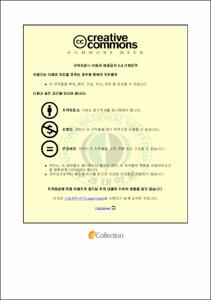SUSTAIN을 이용한 도시배수분구 LID 시설 최적설치방안 연구
- Abstract
- Watershed and stormwater managers need modeling tools to evaluate alternative plans for water quality management and flow abatement techniques in urban and developing area. Government and local watershed planning agencies demand a watershed-scale, decision-support framework based on cost optimization to coordinate watershed-scale investments to achieve necessary improvement in water
quality. The U.S. Environmental Protection Agency(EPA) has been working since 2003 to develop such a decision-support system. The resulting modeling framework is called the System for Urban Stormwater Treatment and Analysis INtegration(SUSTAIN). SUSTAIN provides evaluating, selecting, and placing LID(Low Impact Development) facilities in an urban watershed based on user-defined cost and effectiveness criteria.
This paper estimates LID facility scale and number of units in oncheoncheon watershed to evaluate applicability of SUSTAIN. Required data to drive the model reflects the domestic situation, estimated the optimal scale and quantities of LIC facility using cost - effectiveness curve derived from an optimization process. Applied estimations calculates geoje urban drainage catchment, TP load reduction to be 20% costing about 1.1 billion Korean Won. Outlook of LID installation for optimal effectiveness can be bright if observational data is applied in a calibration and verification.
- Issued Date
- 2013
- Awarded Date
- 2013. 2
- Type
- Dissertation
- Publisher
- 부경대학교
- Affiliation
- 부경대학교 대학원
- Department
- 대학원 환경공학과
- Advisor
- 김상단
- Table Of Contents
- Ⅰ. 서론 1
1. 연구배경 및 목적 1
2. 연구내용 3
3. 연구동향 4
Ⅱ. 연구 방법 7
1. SUSTAIN 모형 설명 7
가. Framework Manager 12
나. Simulation Modules 14
다. Optimization Module 15
라. Post-Processor 16
2. SUSTAIN의 스케일에 따른 모의 21
3. 연구 대상 지역 24
4. 모형 입력자료 구축 26
가. 기상자료 25
나. DEM 및 토지이용도 28
다. 비점오염원의 축적과 쓸림 매개변수 산정 30
라. LID 시설 개요 34
마. LID 시설 관련 정보 39
바. 토지이용 별 LID 시설 선정 44
Ⅲ. 결과 및 고찰 47
1. 총량 토지계 배출 부하량 결과 47
2. LID 시설 최적 설치 방안 결과 50
3. 스케일에 따른 변화 결과 63
Ⅳ. 결론 69
참고문헌 72
- Degree
- Master
- Files in This Item:
-
-
Download
 SUSTAIN을 이용한 도시배수분구 LID 시설 최적설치방안 연구.pdf
기타 데이터 / 2.46 MB / Adobe PDF
SUSTAIN을 이용한 도시배수분구 LID 시설 최적설치방안 연구.pdf
기타 데이터 / 2.46 MB / Adobe PDF
-
Items in Repository are protected by copyright, with all rights reserved, unless otherwise indicated.